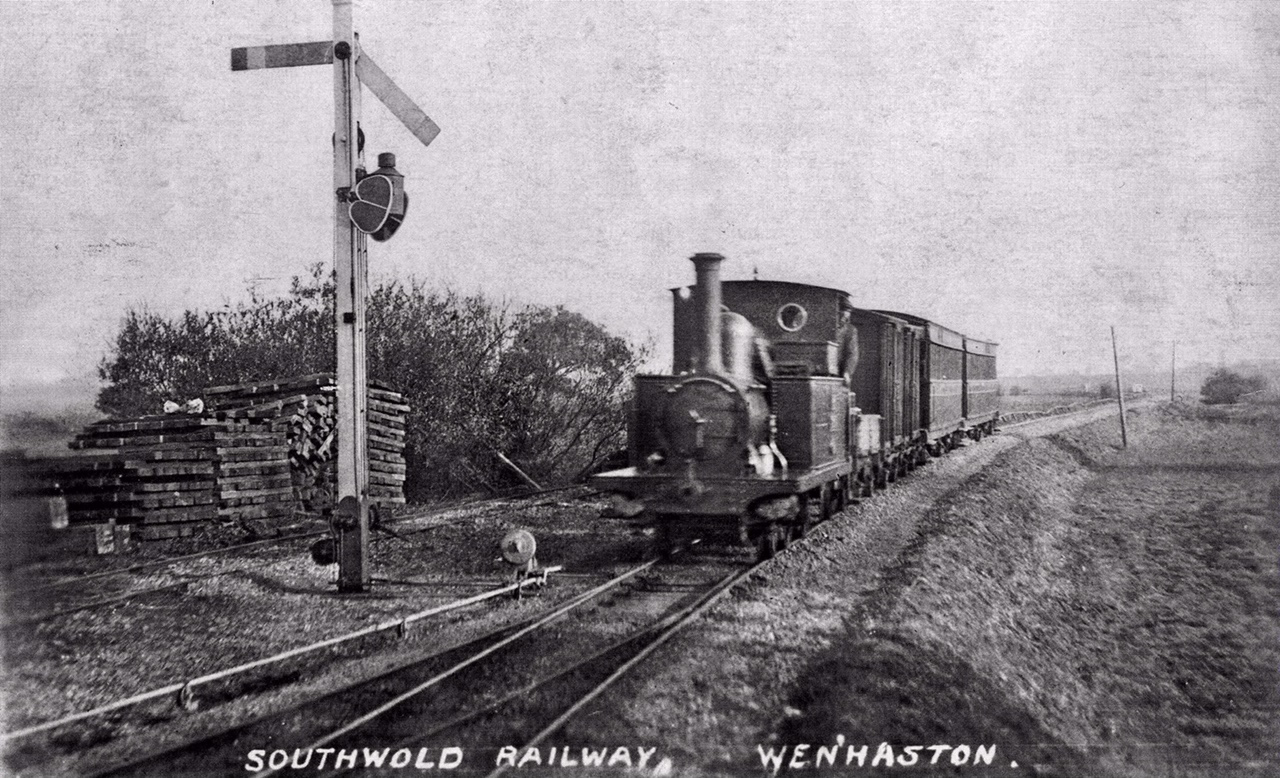The case for revival at Halesworth and Blythburgh
Halesworth
- Halesworth, is an up-and-coming market town which already has a lot to offer visitors and would provide an ideal support-network and hub for a heritage railway.
- The Halesworth to Wenhaston section of the old Southwold Railway is west of the A12 trunk road and outside the designated Area of Outstanding Natural Beauty, thus the railway will fit in with local and regional plans for new attractions
- The Halesworth to Southwold Railway was a classic high-Victorian means of transport through the beautiful Blyth Valley, and deserves to be seen again in all its quirky glory
- It was unique in many different ways. In its gauge, in its locomotives, in its unusual rolling stock, most of which it used throughout its short 50-year history, in its financial success as a private independent company and as an important part of Suffolk’s history
- The historic trackbed and many of the original civil engineering features, are still mostly unencumbered and in good condition
- The railway provided and could again provide, an alternative way for visitors and residents to enjoy the Blyth Valley without clogging up its narrow, country roads with vehicular traffic
- Heritage railways provide advantages, including economic benefits, to the areas where they have been revived and a restored Halesworth to Southwold railway would enhance the tourist friendly things Halesworth already has to offer visitors.
- Heritage railways are known and proven to extend the tourist season and provide family-friendly, all-weather, all-year attractions for day and longer-term visitors. 1 in 8 of everyone employed in East Suffolk, works in tourism, so it is very important to the local economy
- Heritage railways provide not only volunteering opportunities (and volunteering is known to be good for one’s well-being) but many of them also provide jobs, the Ffestiniog Railway, for example, employs over 100 people.
- Yes, nothing is impossible and yes, it can be done! The Ffestiniog Railway’s Welsh Highland extension, 24 miles through the Snowdonia National Park, re-opened 74 years after its closure. despite the removal of all the rails and the demolition of most of the stations. Another example is the Lynton and Barnstaple Railway, which has partially re-opened through the Exmoor National Park, nearly 90 years after its closure. Re-opening a long-closed railway is practical, given community and other support
- Our Society became a Charitable Interest Organisation in April 2023 and that upgrade in legal status emphasised the huge importance of Halesworth as a railway hub with its links to London and the Suffolk coast. An importance neglected until now
- We have included the words ‘narrow gauge’ in the name of our CIO because the line from Halesworth to Southwold was built and will be restored to, the very unusual gauge of three feet. A gauge only ever shared with two other English passenger lines.
- One of our aims is to build a replica of Halesworth Station (Southwold Branch Line) close to the town, but on a new site, as the original is no longer available. Hopefully, the community will be involved in selecting the new site.
Blythburgh
- Pending the fulfilment of the latter aim, which has proved to be problematic and difficult, for a number of reasons, our attention has had to turn to the former Halesworth to Southwold Railway trackbed at Blythburgh, which is now the centre of our operations.
- At Blythburgh we have renovated the original Southwold Railway Goods Shed. It was built in 1879 and by 2019 it was in serious danger of total collapse. That was, until our volunteers stepped in and spent hundreds of man hours and much of their own money in buying materials, repairing and restoring it to its as built condition.
- A few years ago our volunteers uncovered some old brickwork at Blythburgh, which, upon further investigation was found to be part of the original Blythburgh Station building, which was demolished in 1941.
- Since then the foundations have been completely uncovered and are now a feature of the site.
- We have now re-created a platform and relaid a 70 yard section of track, upon which, on our public Open Days, a battery electric locomotive runs demonstration trains.
- There are plans to run passenger coaches along this stretch of the Halesworth to Southwold railway and it is hoped it will soon be possible to extend this section of the line to the footpath leading to Blythburgh Church.
••Plans are very much in hand to fulfil this latter project.

